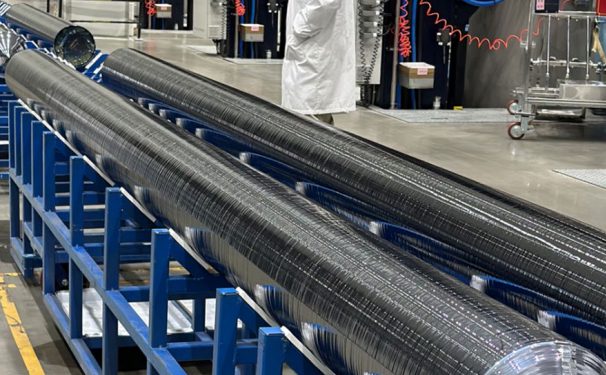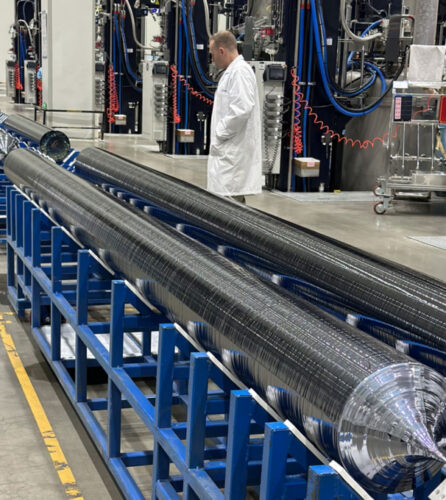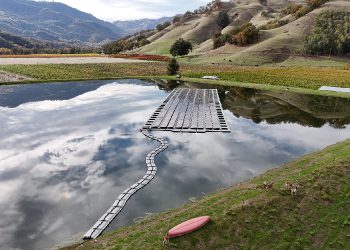With incredible speed, Corning announced in its Q3 earnings call that it has brought its Michigan silicon ingot and wafer factory online. The plans for the solar factory were first publicly revealed in October 2024. The facility is on Corning’s Hemlock semiconductor campus, and Hemlock polysilicon will feed to Corning’s new wafer factory.
“Over the last 18 months, we have built the largest solar ingot and wafer facility in the United States, co-located with our polysilicon manufacturing facility in Hemlock, Michigan. It was a significant undertaking,” said Wendell Weeks, Corning chairman, president and CEO. “To give you a sense of scale, the factory contains as much steel as the Salesforce Tower, San Francisco’s tallest skyscraper. The site is the equivalent of 60 football fields, and the building itself occupies about one-third of that.”
Corning has spent the last year getting more involved in the domestic solar industry. The company activated idle solar polysilicon assets at the Hemlock plant and now has more than 80% of its polysilicon and wafer capacity committed for the next five years. Corning will supply wafers to Suniva in Georgia to make cells for Heliene solar panels assembled in Minnesota. Corning also has a wafer supply agreement with T1, which has a solar cell facility under construction in Texas. Additionally, Corning purchased the JA Solar module assembly facility in Phoenix, Arizona.
Although now participating in nearly every step of the silicon solar panel supply chain, Weeks did not imply Corning would also get into the solar cell game.
“Our area of focus has been on ingots and wafers. And then yes, we also wanted to have a go-to-market position in modules, primarily because we have some new innovations to bring that could increase the conversion efficiency and provide some of the best products or maybe the best product in the world for solar,” he said on the earnings call. “We would like to see the U.S. supply chain that is able to make products that are competitive vs. the landed basis of solar products made overseas. Our focus is going to be on those areas that we can be really strong. We would rather source the cell portion from other U.S. makers through time. But one way or another, we want to bring our innovation to bear so that the U.S. has domestically manufactured solar power.”
The wafer factory in Michigan is currently producing thousands of solar wafers each day, and Corning expects to soon reach more than 1 million produced each day. There’s been no confirmed gigawatt size equivalent of the wafer factory’s production capacity. Corning intends to build its solar business into a $2.5 billion revenue stream by 2028.
This makes Corning the first wafer factory to come online in the United States in over a decade. The last solar wafer producer in the United States was SolarWorld, which at one time made every step of the silicon solar panel in Oregon. The company went out of business in the late 2010s.
Qcells has been working on its all-inclusive solar panel campus in Georgia, but no official word has been released on the operation of its wafer manufacturing. Plans for NorSun’s wafer factory in Oklahoma have stalled.

















